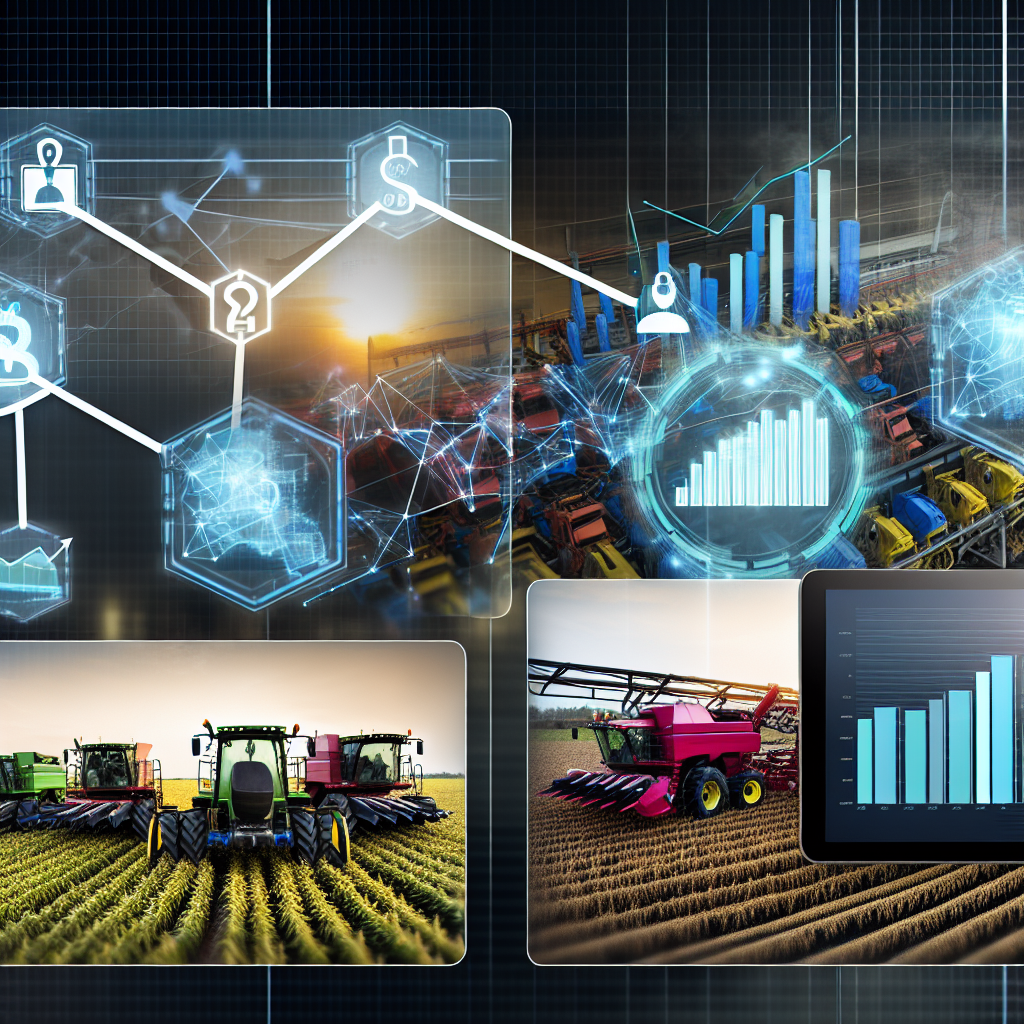Introduction
In an age where technology pervades every aspect of life, the agricultural sector is no exception. Farmers and agribusinesses are increasingly turning to cost-saving technologies to enhance productivity and efficiency while simultaneously minimizing operational expenses. These innovative solutions not only streamline processes but also contribute to a more sustainable future in farming. Among the various technological applications, three key areas stand out: supply chain management, equipment maintenance, and market updates. Understanding how to leverage these technologies effectively can yield significant benefits for agricultural enterprises.
Supply Chain Management
Effective supply chain management (SCM) is pivotal for farmers and agribusinesses as it directly impacts productivity, costs, and overall operational efficiency. Advanced SCM technologies, including blockchain, Internet of Things (IoT), and data analytics, can transform how agricultural products move from farm to consumer. One of the most prominent applications is the use of IoT devices that enable continuous monitoring of crop conditions and supply chain status. These devices collect real-time data on factors such as soil health, weather conditions, and inventory levels, allowing for a responsive and adaptive approach to supply chain logistics.
Moreover, blockchain technology enhances transparency and traceability within the supply chain. By creating a decentralized and immutable record of transactions, blockchain helps in tracking the movement of products, thus ensuring authenticity and reducing the likelihood of fraud. For instance, consumers can verify the source of their food, which is increasingly important in today’s market. This traceability adds value to agricultural products and can justify premium pricing. Additionally, it provides farmers with insights into consumer preferences, enabling them to align production with market demands effectively.
Utilizing advanced analytics tools within supply chain management can also lead to cost savings. By analyzing historical data, farmers can forecast demand more accurately and optimize inventory levels. This reduces waste and lowers storage costs, making the entire supply chain more efficient. In essence, effective supply chain management not only reduces costs but also enhances customer satisfaction—a win-win situation for agricultural enterprises.
Equipment Maintenance
Another critical area where cost-saving technology shines in agriculture is equipment maintenance. The maintenance of machinery and tools is crucial for ensuring operational efficiency and reducing downtime. Traditional maintenance practices often rely on scheduled inspections and reactive measures, which can lead to unexpected failures and costly repairs. However, technology has revolutionized this process through predictive maintenance and IoT applications.
Predictive maintenance involves the use of sensors and data analytics to anticipate equipment failures before they occur. By continuously monitoring machinery performance and identifying irregularities, farmers can address issues proactively, scheduling repairs during less busy times and avoiding sudden breakdowns. This not only saves costs associated with emergency repairs but also extends the lifespan of equipment. For instance, tractors equipped with IoT sensors can relay real-time data about engine temperature, oil levels, and other performance metrics. If a decline in performance is detected, farmers can intervene promptly, thus preventing further damage.
Furthermore, digital platforms that provide maintenance logs, service reminders, and equipment diagnostics can greatly reduce the cognitive load on farmers, allowing them to focus more on core farming activities. Proper maintenance management ensures that equipment operates at optimal levels, ultimately enhancing productivity and ensuring cost savings in the long run.
Market Updates
In agriculture, staying informed about market trends, consumer preferences, and price fluctuations is fundamental for maximizing profits. Cost-saving technologies can provide farmers with timely market updates, enabling them to make informed decisions about when to plant, harvest, or sell their products. Data analytics tools harness large sets of market data to deliver insights that are valuable for strategic planning.
One effective technological solution is the use of mobile applications and platforms that specialize in agricultural market information. These platforms often aggregate data from various sources, providing real-time updates on market prices, demand forecasts, and competitor analysis. Equipped with this information, farmers can optimize their marketing strategies, deciding the best time to sell their produce to achieve maximum returns.
Moreover, market update technologies can bridge the gap between farmers and buyers. Online marketplaces connect producers directly with consumers and retailers, cutting out intermediaries and allowing farmers to sell their products at better prices. This direct-to-consumer approach not only saves on costs but also helps farmers build brand loyalty and establish a more stable customer base.
Case Studies and Real-world Applications
Several leading agricultural enterprises have effectively implemented these cost-saving technologies to enhance their operations. For instance, a prominent farming co-operative employed IoT sensors to monitor their grain storage facilities. By accurately assessing moisture levels and temperature, they could significantly reduce spoilage and waste, saving hundreds of thousands of dollars annually.
Similarly, another agribusiness utilized predictive maintenance systems for their fleet of tractors. By investing in predictive analytics, they reduced equipment failures by 30%, leading to substantial savings in labor and repair costs, in addition to increasing overall productivity.
In the realm of market updates, a large producer of organic vegetables leveraged a mobile app to gain real-time insights into consumer demand. They discovered a growing market for organic produce and adjusted their planting schedules accordingly, resulting in a 15% increase in revenue within a single growing season.
Conclusion
As agriculture continues to evolve, the incorporation of cost-saving technologies in supply chain management, equipment maintenance, and market updates becomes increasingly paramount. Not only do these technologies lead to enhanced efficiency and reduced costs, but they also provide farmers with a competitive edge in a rapidly changing marketplace. By embracing these innovations, agricultural enterprises can improve their sustainability, boost productivity, and ensure long-term profitability. As the industry moves forward, the role of technology will undoubtedly become more pronounced, making it essential for farmers and agribusinesses to adapt and thrive in this technologically-advanced landscape.

